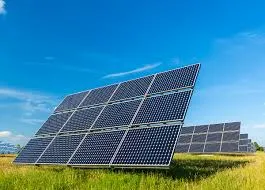concentrated solar power
Concentrated Solar Power Harnessing the Sun's Potential
In the quest for sustainable energy solutions, concentrated solar power (CSP) stands out as a promising technology. Unlike traditional photovoltaic solar panels that convert sunlight directly into electricity, CSP utilizes mirrors or lenses to concentrate a large area of sunlight, thereby generating heat. This heat is then used to produce electricity, making CSP a valuable player in the renewable energy landscape.
The fundamental principle behind CSP is straightforward sunlight is concentrated to heat a fluid, which then drives a turbine connected to a generator. This process can reach efficiencies of up to 20%, making it a competitive option in the renewable energy market. CSP systems come in various designs, including parabolic troughs, solar power towers, and dish-stirling systems, each with its own method of concentrating solar energy.
One of the key advantages of CSP over other renewable sources is its ability to store thermal energy. By integrating thermal energy storage systems, CSP plants can store heat generated during the day and use it to produce electricity even when the sun goes down. This capability addresses one of the significant challenges faced by intermittent renewable energy sources like wind and solar the inability to generate power consistently. With energy storage, CSP can provide energy on demand, making it a reliable source of power for grid operators.
Moreover, CSP installations can also contribute to the local economy. Constructing and operating these facilities creates jobs in manufacturing, installation, maintenance, and operations. This can be particularly beneficial in arid regions where CSP is most viable due to high solar insolation levels. Additionally, by reducing dependency on fossil fuels, CSP can also alleviate some economic pressures associated with fluctuating oil prices.
concentrated solar power

However, the implementation of CSP technology is not without challenges. The upfront capital costs for CSP plants are significantly higher than those for conventional fossil fuel plants and even higher than some photovoltaic systems. While CSP technology has seen a decrease in costs over the years, it still requires substantial investment, making it less appealing to some investors compared to other renewable technologies.
Another challenge is related to the geographical limitations of CSP. The technology is most effective in areas with direct sunlight, typically found in desert regions. This geographic restriction means that CSP plants are often located far from urban centers, requiring significant infrastructure for energy transmission. To overcome this issue, strategic planning and investment in transmission infrastructure are crucial.
The role of CSP in the global energy landscape is increasingly recognized as countries transition towards net-zero emissions goals. As governments implement policies to encourage renewable energy, CSP presents an attractive option for large-scale electricity generation. Several countries, including the United States, Spain, and China, have invested heavily in CSP technology, leading to the development of some of the world’s largest solar power plants.
Recent advancements in CSP technology further enhance its viability. Innovations such as improved materials for heat collection, more efficient energy storage systems, and hybrid plants that combine CSP with other renewable sources are making CSP a more appealing and flexible energy solution. These developments could pave the way for CSP to play a more significant role in future energy systems, especially as the world seeks to reduce greenhouse gas emissions and combat climate change.
In conclusion, concentrated solar power stands as a beacon of hope in the renewable energy sector. With its ability to provide baseload power, storage capabilities, and job creation potential, CSP can help to transform the way we produce and consume energy. While challenges remain, ongoing research and policy support are likely to enhance the viability of CSP as an integral component of a sustainable energy future. As we harness the sun's potential, technologies like CSP will be essential in our journey towards a cleaner, greener planet.
-
Unlocking Energy Freedom with the Off Grid Solar InverterNewsJun.06,2025
-
Unlock More Solar Power with a High-Efficiency Bifacial Solar PanelNewsJun.06,2025
-
Power Your Future with High-Efficiency Monocrystalline Solar PanelsNewsJun.06,2025
-
Next-Gen Solar Power Starts with Micro Solar InvertersNewsJun.06,2025
-
Harnessing Peak Efficiency with the On Grid Solar InverterNewsJun.06,2025
-
Discover Unmatched Efficiency with the Latest String Solar InverterNewsJun.06,2025







